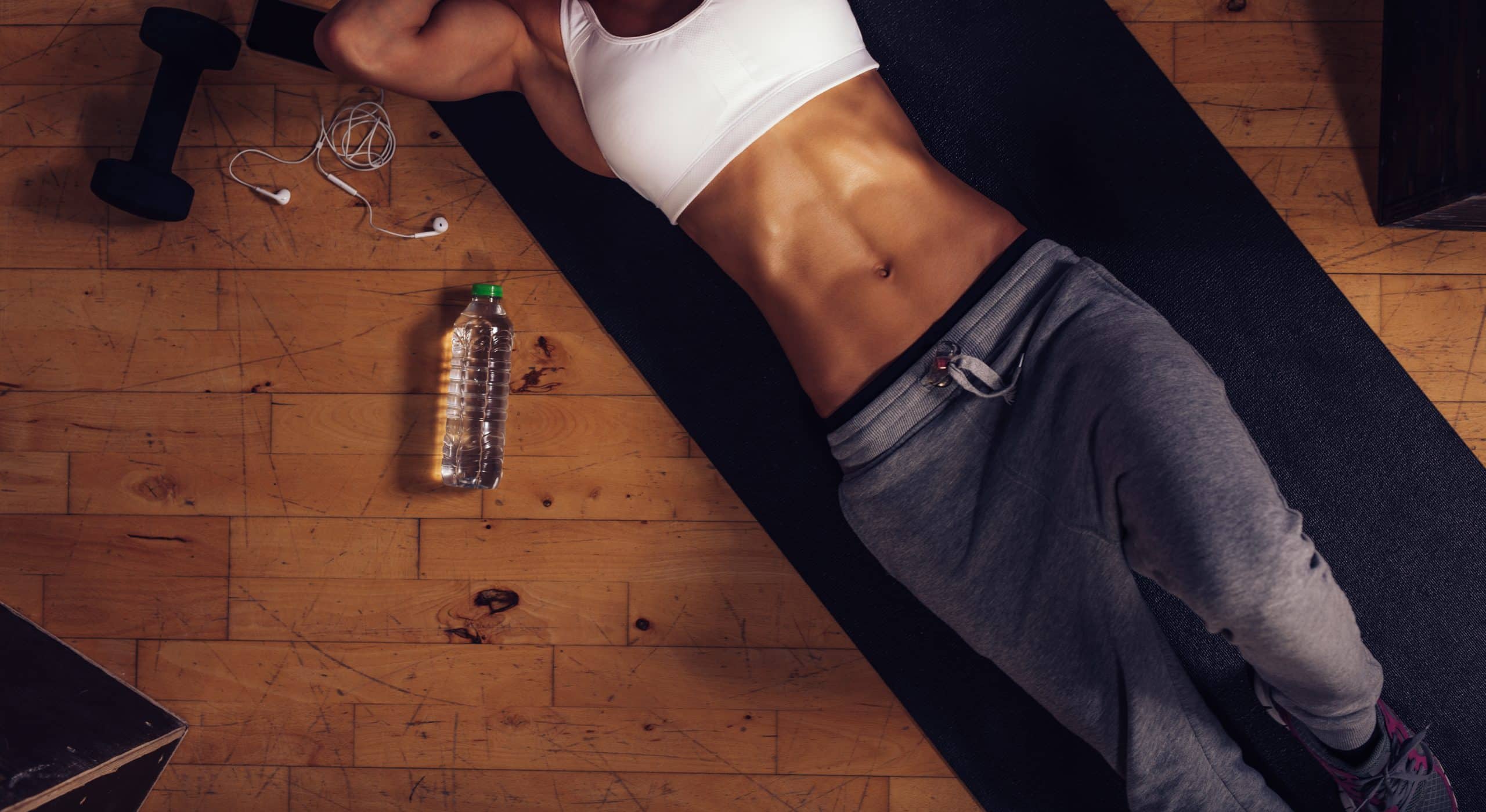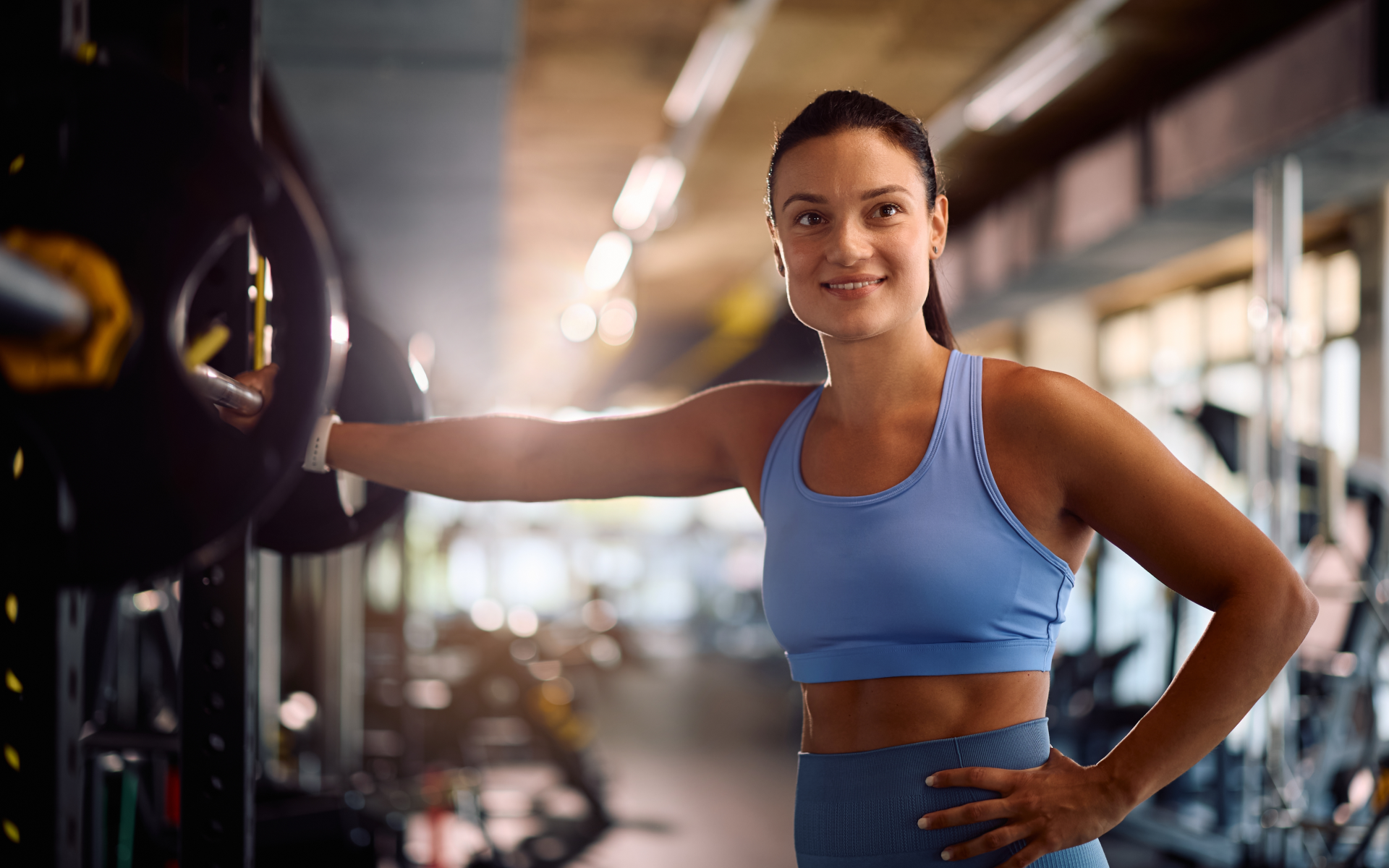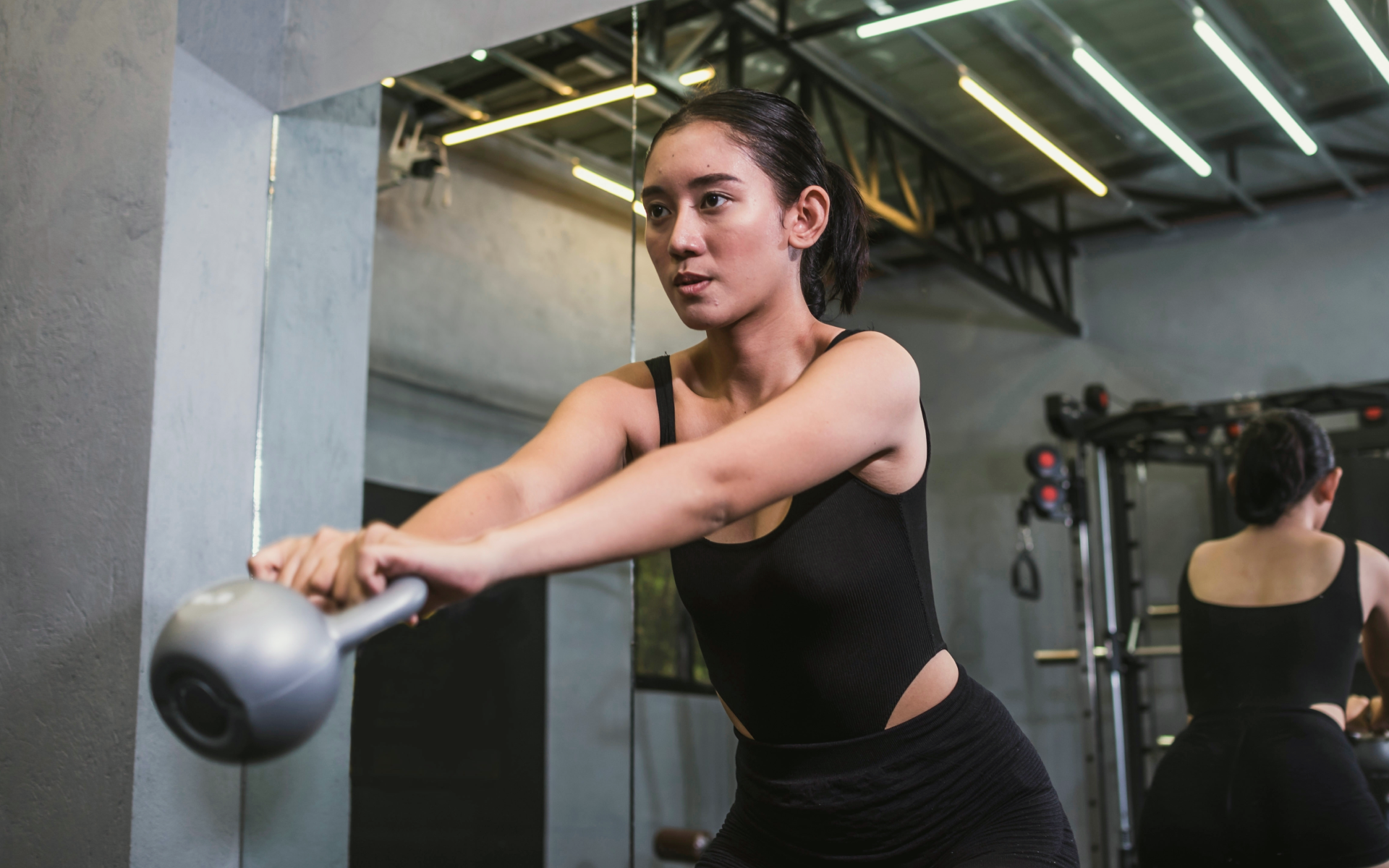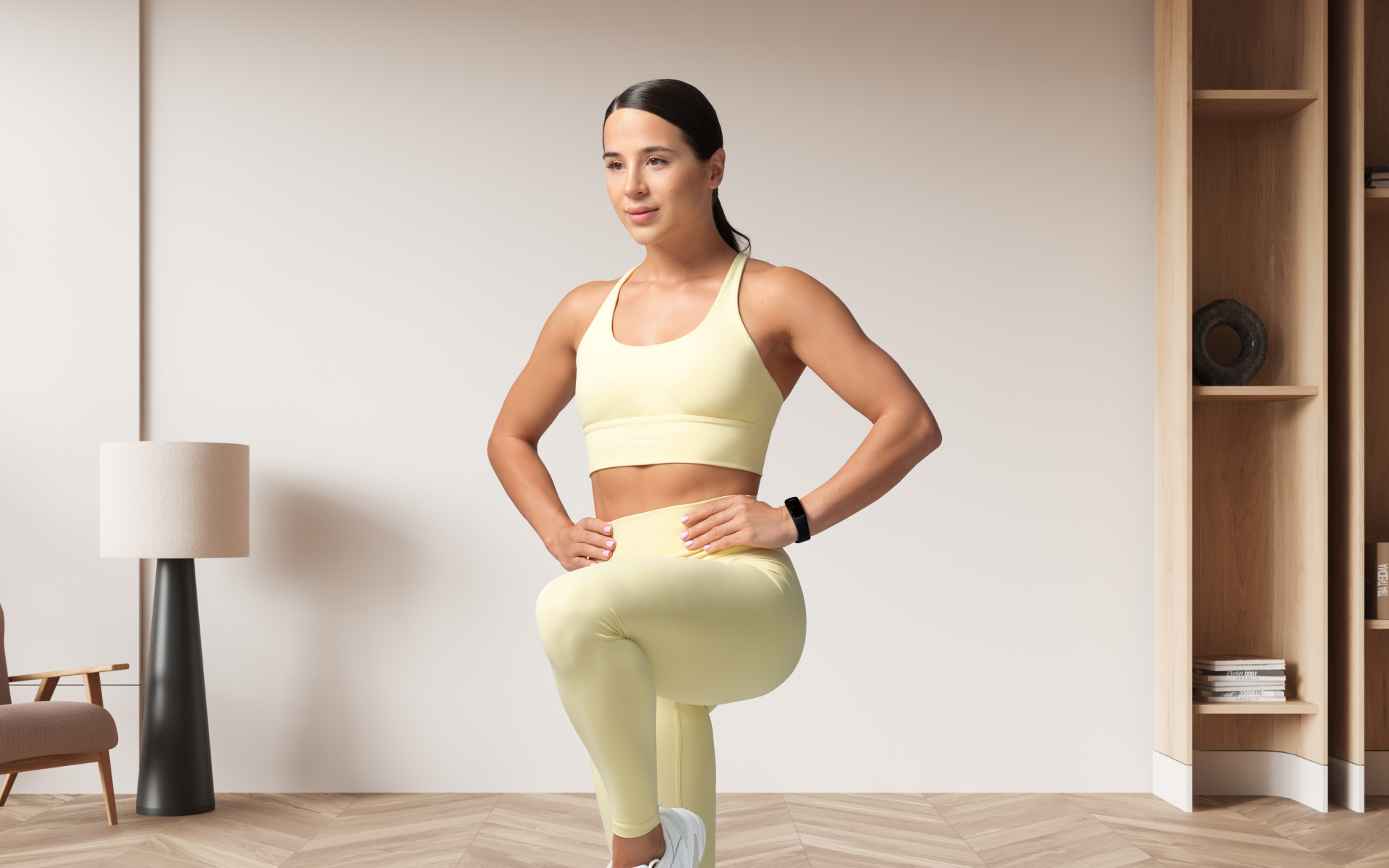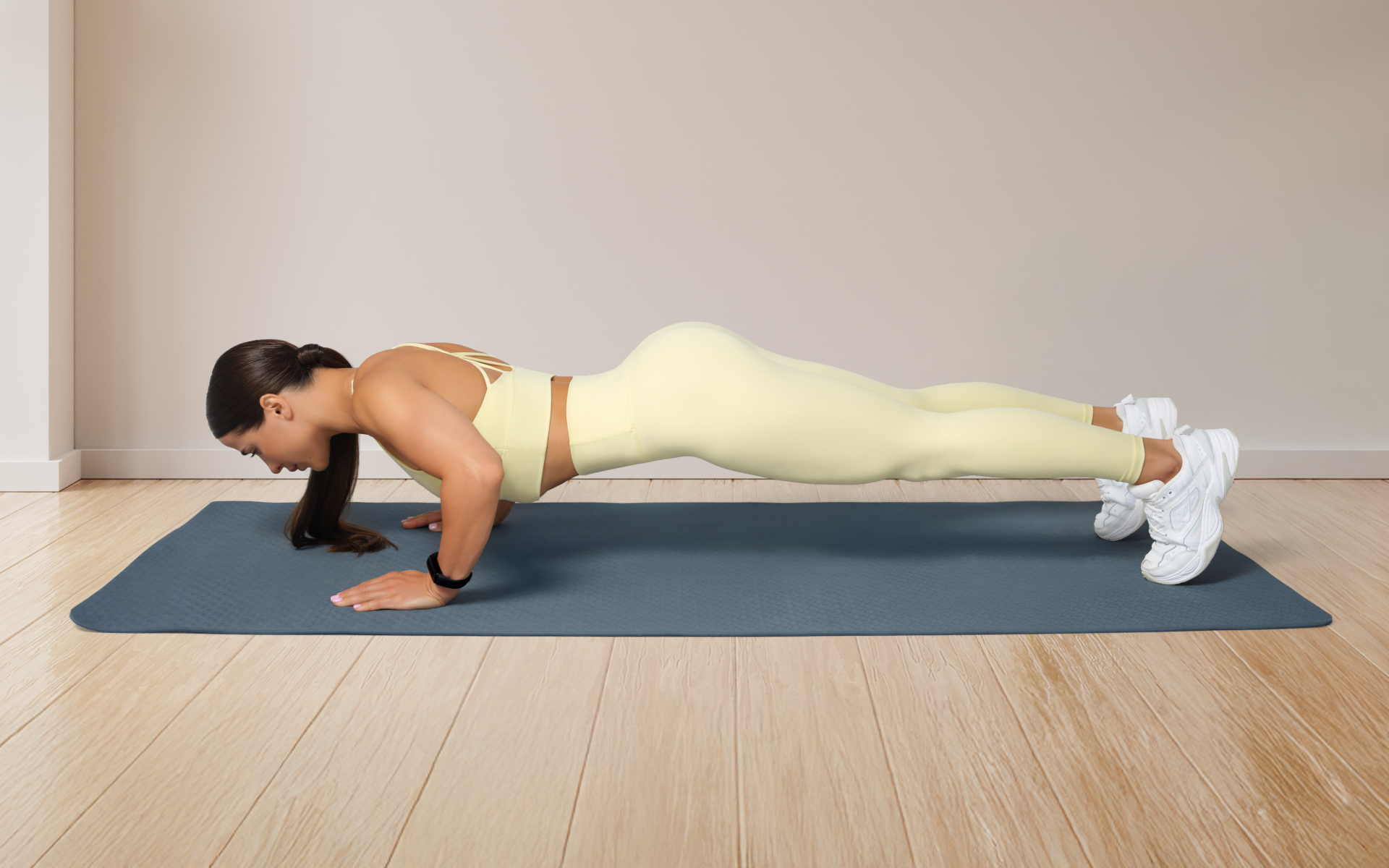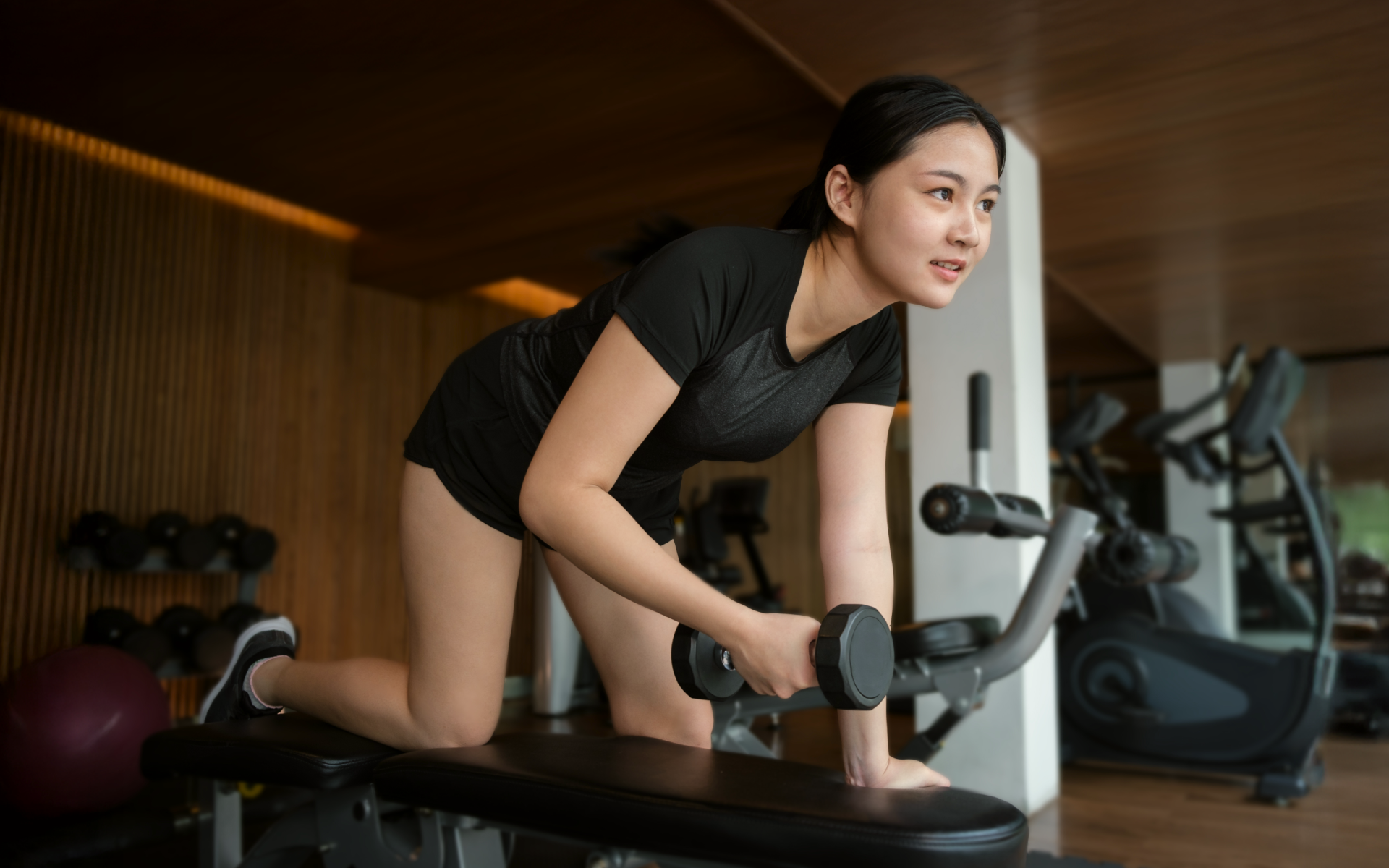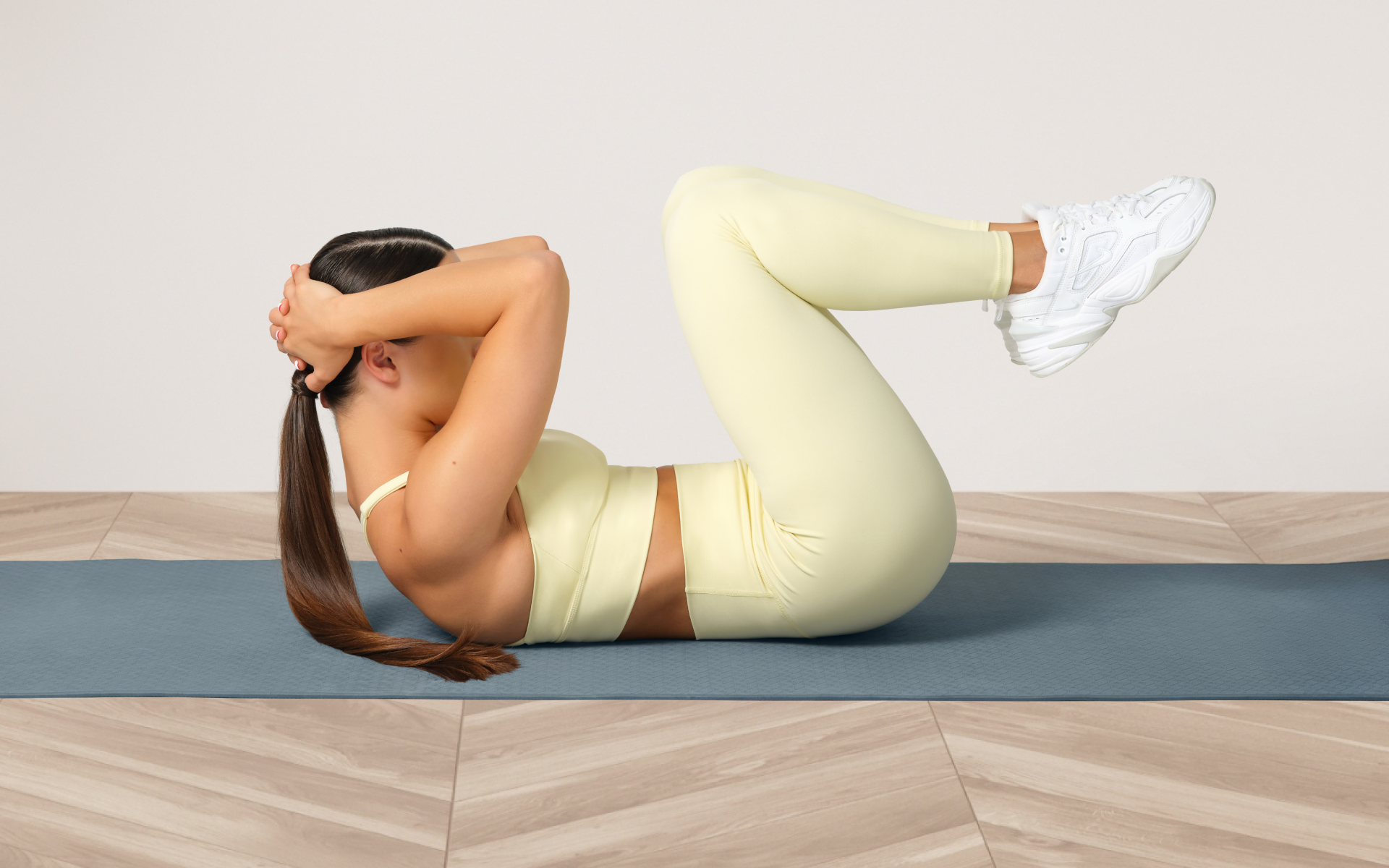A strong core is more than just having the most visible, chiseled abs in your friend group. It is actually the powerhouse of your body, encompassing the transverse abdominis, rectus abdominis, obliques, and lower-back muscles.
Each of these muscles plays a vital role in maintaining balance, supporting posture, protecting the spine, and facilitating movement. From stabilizing your body during dynamic movements to enhancing your performance in various sports, and even preventing injuries, a robust core is essential.
So, a proper ab workout isn’t just about how many crunches you can do in a minute, it’s also about building functional strength and endurance.
Read on as we explore 8 functional, must-have exercises for women with the aim of developing a strong, balanced core.
How Should Women Train Their Abs?
Women should train their abs in a functional (for everyday movements), balanced (working all muscle groups equally), and progressive (gradually increasing intensity) manner.
What’s a Functional Ab Workout?
A functional ab workout targets the core muscles that are used in everyday movements, such as bending, twisting, and reaching. Functional exercises mimic these movements to improve your overall strength and stability.
For women, a functional ab workout can also help with pregnancy and postpartum recovery, as it strengthens the core for carrying and delivering a baby. It can also benefit women with daily activities such as lifting and carrying children, grocery bags, or household items.
What’s a Balanced Ab Workout?
A balanced ab workout ensures all core muscles are worked equally. It’s important to train every muscle group, including the front, sides, and back of the core, for optimal results.
Let’s look at all muscle groups in the core and list a few exercises that work each of them (1). Some exercises may work multiple muscle groups.
- Transverse abdominis – these are the deepest abdominal muscles that wrap around your torso like a corset and provide stability and support to your spine. Planks, deadbugs, and bird-dog exercises target this muscle group.
- Rectus abdominis – the most visible muscles in the core, they run down the front of your abdomen from your ribcage to your pelvis. Crunches, sit-ups, and leg raises target this muscle group.
- Obliques – these are on the sides of your abdomen and help with rotation and lateral flexion (side bending). Side plank, Russian twists, and bicycle crunches target this muscle group.
- Lower-back muscles – these include the erector spinae muscles that run along your spine and help with extension (backward bending) and rotation. Superman, bird-dog, and back extensions target this muscle group.
Check out our blog on the Best Ab Workouts for Women to see how you can incorporate exercises that target each of these muscle groups into your routine.
What’s a Progressive Ab Workout?
A progressive ab workout gradually increases in intensity, challenging your muscles to adapt and become stronger.
Progressive overload isn’t strictly limited to adding weights. It can also mean increasing reps, sets, or difficulty of exercises.
For example, instead of doing a traditional plank, you could try a side plank or add instability by using a stability ball. These variations engage more muscles and increase the challenge for your core.
If you tend to let yourself off the hook, raise the white flag when things get tougher than you expected, send yourself on an unconscious binge-eating trip – BetterMe app is here to help you leave all of these sabotaging habits in the past!
What Is the Very Best Ab Exercise?
Standing kettlebell marches may be one of the best exercises for abs for females at home for several reasons. They target the transverse abdominis and obliques and can easily be progressed as you become stronger.
To perform them:
- Stand tall, holding a kettlebell with both hands at your chest.
- Tighten your abs and lift one knee while maintaining your balance.
- Lower your leg, then repeat on the other side.
- Repeat for 10-12 reps on each side.
Other exercises you can include in your ab workouts at home include:
Planks
Great for targeting the transverse abdominis, rectus abdominis, and obliques, planks can easily be modified to fit any fitness level and they can be performed anywhere. This makes them a must for the best ab workout for women.
To perform a plank:
- Start in a push-up position with your hands directly under your shoulders and feet hip-distance apart.
- Engage your core muscles and keep your body in a straight line from head to heels.
- Hold for 30 seconds to 1 minute, rest, and repeat.
- As you get stronger, you can increase the duration or add variations such as side planks or plank jacks.
Russian Twists
Russian twists are a dynamic exercise that targets the obliques and lower-back muscles. They can be performed with or without weights and help improve rotational strength in the core.
To perform a Russian twist:
- Sit on the floor with your knees bent and feet flat on the ground.
- Lean back slightly, keeping your back straight, and lift your feet off the ground.
- Hold onto a weight or medicine ball at chest level and rotate from side to side while engaging your abs.
Beginners can keep their feet on the ground and only rotate their upper body, while advanced-level practitioners can lift their feet higher or add weights for more resistance.
Bird-dog
The bird-dog is an excellent exercise for core stability and balance. It engages the transverse abdominis, rectus abdominis, and lower-back muscles. It’s also among the best exercises for female beginners as it’s easy to learn and can be modified for all levels.
To perform a bird-dog:
- Start on your hands and knees with your hands directly under your shoulders and knees under your hips.
- Slowly extend one arm in front of you while extending the opposite leg behind you.
- Hold for a few seconds, then return to the starting position and switch sides.
As you progress, you can increase the duration and add resistance by using ankle weights or a resistance band.
Deadbugs
Deadbugs are another fantastic exercise for core stability and they are particularly beneficial for pregnant women. They target the transverse abdominis and help improve balance and coordination. They’re great for an ab workout at home for ladies without equipment, as long as they’re performed slowly with controlled movements.
To perform a deadbug:
- Lie on your back with your arms extended above you and legs bent at 90 degrees.
- Slowly lower one leg toward the ground while lowering the opposite arm to the ground above your head.
- Bring both limbs back to starting position, then switch sides.
- As you get stronger, you can add resistance by using ankle weights or a medicine ball.
Side Plank
The side plank targets the obliques and improves lateral stability. A sister to the more traditional plank, it adds an extra challenge by engaging the core muscles differently.
To perform a side plank:
- Lie on your side with your elbow directly under your shoulder and feet stacked on top of each other.
- Push into your elbow and lift your hips off the ground until your body forms a straight line from head to heels.
- Hold for 15 seconds to 1 minute, then switch sides.
For an added challenge, you can lift your top leg or add a hip dip by lowering and lifting your hips while holding the plank position.
Read more: Thigh Workout Guide: 7 Effective Exercises for Building Leg Strength
Bicycle Crunches
Crunches are a classic exercise that works the rectus abdominis and obliques simultaneously. The “bicycle” element in this variation increases the challenge and adds a dynamic movement to the exercise.
To perform bicycle crunches:
- Lie on your back with your hands behind your head and legs bent at 90 degrees.
- Bring one knee toward your chest while rotating your upper body, bringing your opposite elbow to touch it.
- Repeat on the other side, alternating between sides as if you’re pedaling a bicycle.
- For an added challenge, you can extend your legs further out and slow down the movement so your core spends more time under tension.
Scissor Kicks
Similar to bicycle crunches, scissor kicks target the rectus abdominis and obliques, but with a focus on the lower abs. They also help improve coordination and balance.
To perform scissor kicks:
- Lie on your back with your arms by your sides and legs extended straight.
- Lift both legs off the ground a few inches and alternate between lifting one leg higher than the other as if you were kicking your feet in the swimming pool.
- You should feel your abs working to keep your legs lifted and controlled.
- As you get stronger, you can add resistance by using ankle weights.
Stability Ball Rollouts
If you’re looking for an advanced exercise that challenges all core muscles while also engaging other stabilizing muscles in the body, stability ball rollouts are perfect.
To perform a stability ball rollout:
- Start on your knees with your forearms on a stability ball in front of you.
- Slowly roll the ball forward while keeping your abs engaged and your back straight.
- Roll out as far as you can, then use your core muscles to pull the ball back toward you.
You can make this exercise more challenging by extending your arms further out or rolling out into a plank position.
How Often Should a Girl Train Abs?
A girl should train her abs 2-3 times a week, allowing at least one rest day in between workouts. Abs are just like any other muscle group and require time to recover and grow.
Overtraining can lead to injury and hinder progress (8). At the same time, without consistency, it will be difficult to see any results.
There are several factors to consider when determining how often a girl should train her abs, such as fitness level, current routine, and goals.
Fitness Level
How strong are your abs currently? If you’re just starting, it’s best to start with 2 workouts per week and gradually increase as your strength improves. Remember, most exercises in your ab workout target more than just the abs, so it’s important to give them a break.
Current Routine
How does the rest of your workout routine look? If you’re already doing exercises such as squats, deadlifts, and planks that engage your core muscles, you may not need as many dedicated ab workouts. However, if you’re mainly focusing on cardio or other muscle groups, adding in a couple of ab workouts can be beneficial.
Goals
What are you trying to achieve with your abs? If you want visible six-pack abs, you may need to train them more often and with higher intensity, but if your goal is to improve core strength and stability, 2-3 times per week should suffice.
BetterMe app is a foolproof way to go from zero to a weight loss hero in a safe and sustainable way! What are you waiting for? Start transforming your body now!
How Long Should Your Ab Workouts Be?
Ab workouts at home or at the gym should be at least 15-30 minutes long if done correctly. This timeframe allows for a proper warm-up and cool-down, together with exercises that target all areas of the core.
Quality over quantity is key when it comes to ab workouts. It’s best to do fewer reps with proper form, rather than many reps with sloppy form.
However, as you progress and become stronger, you may need longer workouts or even a day that is dedicated to solely abs to continue challenging your muscles and seeing progress. As with any workout, it’s essential to listen to your body and adjust accordingly.
If you feel fatigued or experience pain during an ab workout, you should take a break and allow your muscles to recover.
How Can a Woman Tone Her Stomach Fast?
Dedicated ab exercises like the ones mentioned above are one piece of the puzzle for achieving a toned stomach. However, it’s important to remember that spot reduction (targeting specific areas for fat loss) is not possible.
In order to see visible results, you must stick to a well-rounded workout routine and maintain a healthy diet.
In addition to regular ab workouts, here are some tips for toning your stomach faster:
- Incorporate full-body strength training exercises, such as squats, deadlifts, and lunges. These exercises engage multiple muscle groups and help increase overall muscle mass, which can contribute to a toned stomach.
- Add high-intensity interval training (HIIT) workouts a few times a week. HIIT has been proven to be effective in burning fat and increasing muscle definition (6).
- Eat a balanced and nutritious diet with a focus on whole foods, lean protein, healthy fats, and complex carbohydrates. You should also avoid processed and sugary foods that can contribute to belly fat (10).
- Stay hydrated by drinking plenty of water throughout the day. Proper hydration is essential for maintaining energy levels and helping with digestion (11).
- Get sufficient rest and recovery time between workouts. Adequate sleep and rest are essential for muscle growth and repair (7).
So instead of focusing on quick fixes or spot reduction, you should focus on overall health and wellness to see long-lasting results in your abs.
Our Indoor Exercise guide for girls covers various exercises targeting the abs, from beginner to advanced practitioners.
Read more: Your Flat Tummy Workouts Just Got Better With This Guide
FAQs
What are the 5 foods that burn belly fat?
No foods are proven to directly target belly fat, but some studies have shown that certain foods can help with weight loss and contribute to a healthier metabolism, including:
- Green tea contains antioxidants and caffeine that may help increase fat burning (2).
- Certain herbs and spices such as ginger, cayenne pepper, and cinnamon have been shown to help boost metabolism and aid in digestion (4).
- Lean protein sources such as fish, chicken, tofu, and beans can help keep you feeling full for longer periods while aiding in muscle growth (9).
- Healthy fats from sources such as avocados, nuts, olive oil, and fatty fish can help regulate hunger hormones and reduce cravings (5).
- Whole grains such as quinoa, brown rice, and oats are high in fiber and can help keep you feeling full (3) while also providing essential nutrients for a healthy metabolism.
Remember, while incorporating these foods into your diet may be beneficial, it’s important to focus on a well-rounded and calorie-conscious diet.
Is it OK to work out your abs every day?
It’s not recommended to work out your abs every day. As with any other muscle group, they require time to rest and recover in order to grow and avoid injury. You should aim for 2-3 ab workouts per week with at least one rest day in between.
Can you do 10-minute abs every day?
Yes, you can do 10-minute ab workouts every day, but it may be more beneficial to incorporate longer, dedicated ab workouts a few times a week rather than short sessions every day.
Again, it’s not recommended to work out your abs every day.
While 10 minutes may seem like a short amount of time, if it is done correctly with proper intensity, it can still be an effective workout. However, it’s best to give your abs at least one day of rest before you do another 10-minute ab workout. It’s also important to incorporate other types of exercises and work your entire core, rather than just focusing on one area.
Our Push Day Workout guide also offers tips on how to effectively and safely train your abs during a workout routine that includes other muscle groups.
How long does it take for a girl to get toned abs?
You can get toned abs in as little as 4-6 weeks with dedication and consistency. However, this timeframe may vary depending on your current fitness level, diet, and overall lifestyle habits. The fitter you are, the faster you should see results. The more consistent you are with your exercise and diet, the quicker you should see progress.
It’s also important to remember that visible abs are not the only indicator of a strong core, and it’s essential to focus on overall health and wellness rather than just aesthetic goals.
The Bottom Line
Ab workouts for women should target every area of the core and be done 2-3 times a week with proper form and adequate rest days in between. While it may be tempting to do quick ab workouts or try fad diets for fast results, sustainable progress comes from a balanced workout routine and healthy lifestyle habits.
DISCLAIMER:
This article is intended for general informational purposes only and does not serve to address individual circumstances. It is not a substitute for professional advice or help and should not be relied on for making any kind of decision-making. Any action taken as a direct or indirect result of the information in this article is entirely at your own risk and is your sole responsibility.
BetterMe, its content staff, and its medical advisors accept no responsibility for inaccuracies, errors, misstatements, inconsistencies, or omissions and specifically disclaim any liability, loss or risk, personal, professional or otherwise, which may be incurred as a consequence, directly or indirectly, of the use and/or application of any content.
You should always seek the advice of your physician or other qualified health provider with any questions you may have regarding a medical condition or your specific situation. Never disregard professional medical advice or delay seeking it because of BetterMe content. If you suspect or think you may have a medical emergency, call your doctor.
SOURCES
- Abdominal Muscles (n.d., physio-pedia.com)
- Beneficial effects of green tea: A literature review (2010, biomedcentral.com)
- Dietary fibre and satiety (2007, onlinelibrary.wiley.com)
- Effects of Red Pepper, Ginger, and Turmeric on Energy Metabolism: Review of Current Knowledge (2023, pubmed.ncbi.nlm.nih.gov)
- Fats and Satiety – Fat Detection (2010, ncbi.nlm.nih.gov)
- High-Intensity Intermittent Exercise and Fat Loss (2011, hindawi.com)
- How does sleep help recovery from exercise-induced muscle injuries? (2021, sciencedirect.com)
- Overtraining Syndrome (2012, ncbi.nlm.nih.gov)
- The role of protein in weight loss and maintenance (2015, sciencedirect.com)
- Ultraprocessed Foods and Obesity Risk: A Critical Review of Reported Mechanisms (2023, sciencedirect.com)
- Water, hydration, and health (2010, academic.oup.com)
